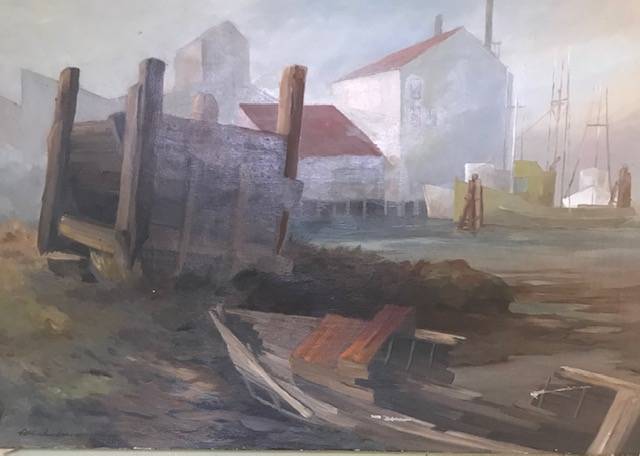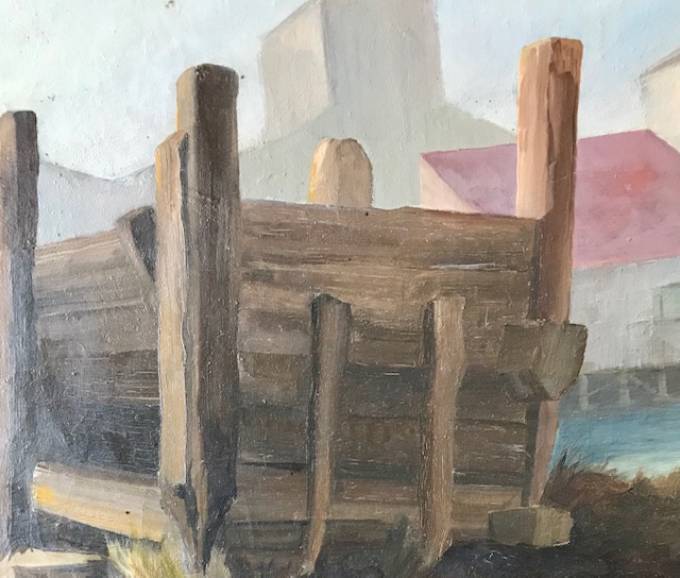I was given two astounding assignments early in my time at the Monterey Peninsula Herald, now the Monterey County Herald.
One was to review the Monterey Jazz Festival shortly after arriving on the job—as a general assignment reporter. The paper’s usual jazz critic was indisposed. I have no ear for music. So, I decided to depend on dramatic instinct, and it kind of worked. My judgments more or less synced with the renowned jazz critic Leonard Feather. But Feather, a jazz pianist, could tell you why something was good or missed the mark. I couldn’t, or not very well. The paper gave me a bonus anyway.
The other was to take over the popular weekly “On the Waterfront” column. It was a good deal. Every week I got a few hours to roam the waterfront on my own. News people love that kind of freedom. The beat included stopping in wharf bars and hitching rides on boats—once to board the famous Calypso and meet Philippe Cousteau. His father Jacques Cousteau, an ocean conservationist ahead of his time, was back in France. And it was fun to hear the fishermen tell stories. For instance, an old Italian fisherman named Nino told me of a seal leaping onto the deck of his little boat to pilfer just-caught fish. Nino exclaimed and gestured, “How much you pay to have a ride?” The seal thought about it, devoured a cod, and hopped off.
Then there was the piece I did with the headline “The Last Fish Hopper.” I didn’t know what a fish hopper was, and the one floating just off the shore was no longer in use. As I came to understand it, fish hoppers were left over from the great sardine-catch days Steinbeck and others wrote of. Fishermen clued me in. The fish hoppers had flexible underwater piping that connected to the canneries. Fishermen could dump catches from boat to hopper, and from there the sardines would be funneled into the canneries. The fishing boats then immediately headed out to gather more sardines.
All this came to mind when I first saw the painting shown here. It is almost surely a rare painting of Cannery Row from the sea. Even old photographs of the Row from a boat are rare, paintings triply so. The large wooden structure, on the other side of a grounded splintered boat, is an out-of-commission fish hopper. The painting captures the muted coastal light filtering through the mist, sunlight touching purse seiners close by the back of the Cannery Row buildings.
It is such a fine painting, I thought it must be by one of the famous Peninsula artists of the time. I was wrong. It was painted by a woman named Patricia Michielssen, who was born (1929) and died (2017) in Watsonville, California, 30 minutes northeast of Monterey. John Steinbeck’s sister Esther had a home in Watsonville. The author visited often. Maybe Esther and Patricia knew each other. Maybe Steinbeck knew Patricia. Michielssen also spent many of her years in nearby Moss Landing. The coastal light she caught in this painting would have been seen often in that town’s harbor.
Otherwise, all I’ve been able to find as further evidence of her talent is two drawings—a windmill and a sprawling oak. If told they’d been done by Andrew Wyeth, I would believe it. Michielssen’s obituary mentions that she was a fine pen and ink artist whose work was displayed throughout the Southwest, but says nothing more about her artistic accomplishments.
The Cannery Row painting is not dated. Given the year of the artist’s birth, it’s unlikely it was painted before the late 1940s. The abandoned fish hopper also indicates a later date. By the end of World War II sardines had almost disappeared from Monterey Bay. So, it came after Steinbeck’s time of living in California, probably in the 1950s, maybe even the 1960s. If Steinbeck did see it on one of his trips back home, I am sure he appreciated the mood it creates. Artists were friends all his adult days—and he knew a fine painting when he saw one. Especially when it was a place he loved.
And, of course, Steinbeck would have known all about fish hoppers.




Wonderful, all the way around
Great memories and a wonderful explanation of abandoned flotsam around Cannery Row and how it could nevertheless be delightfully artistic in the right hands (or brush). Steve has a remarkable track record of discovering and publicizing female artists. And it’s always fun to hear Steve’s comments about Steinbeck and Cannery Row.